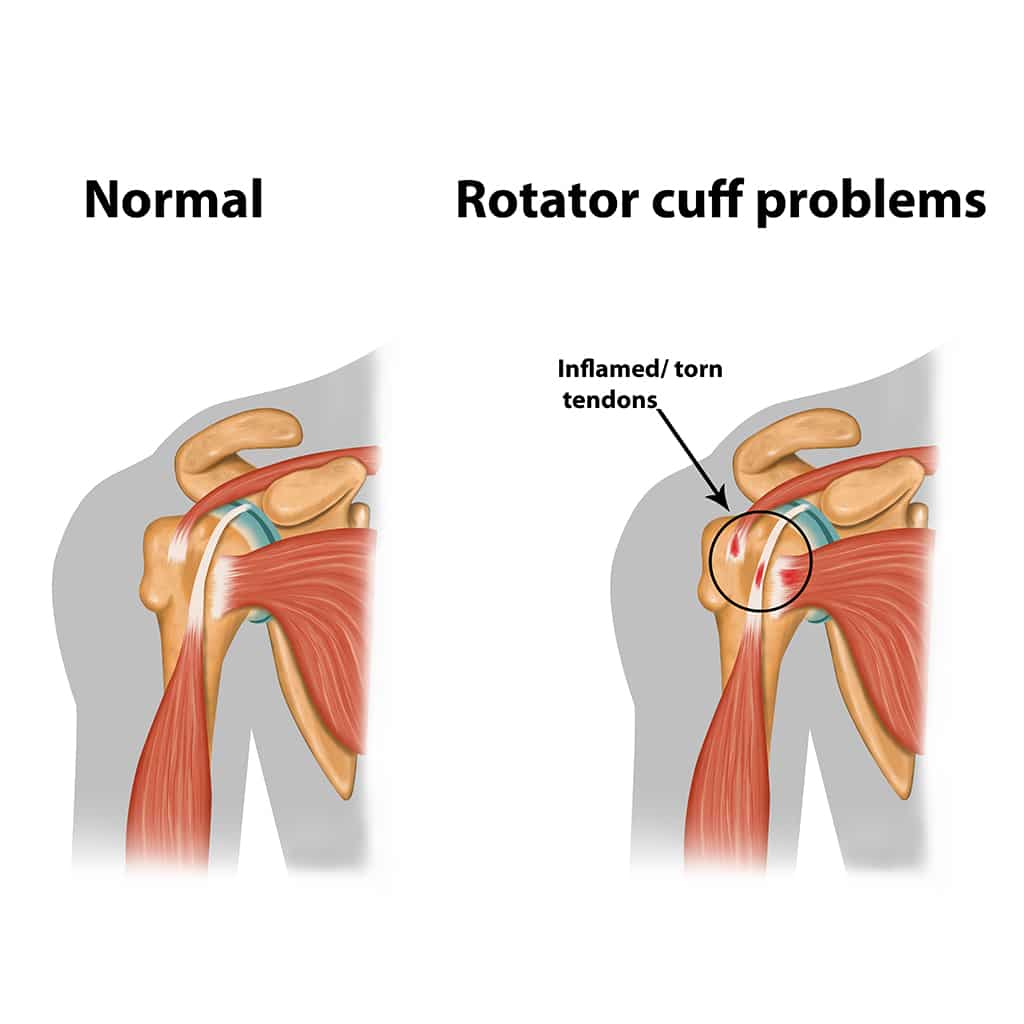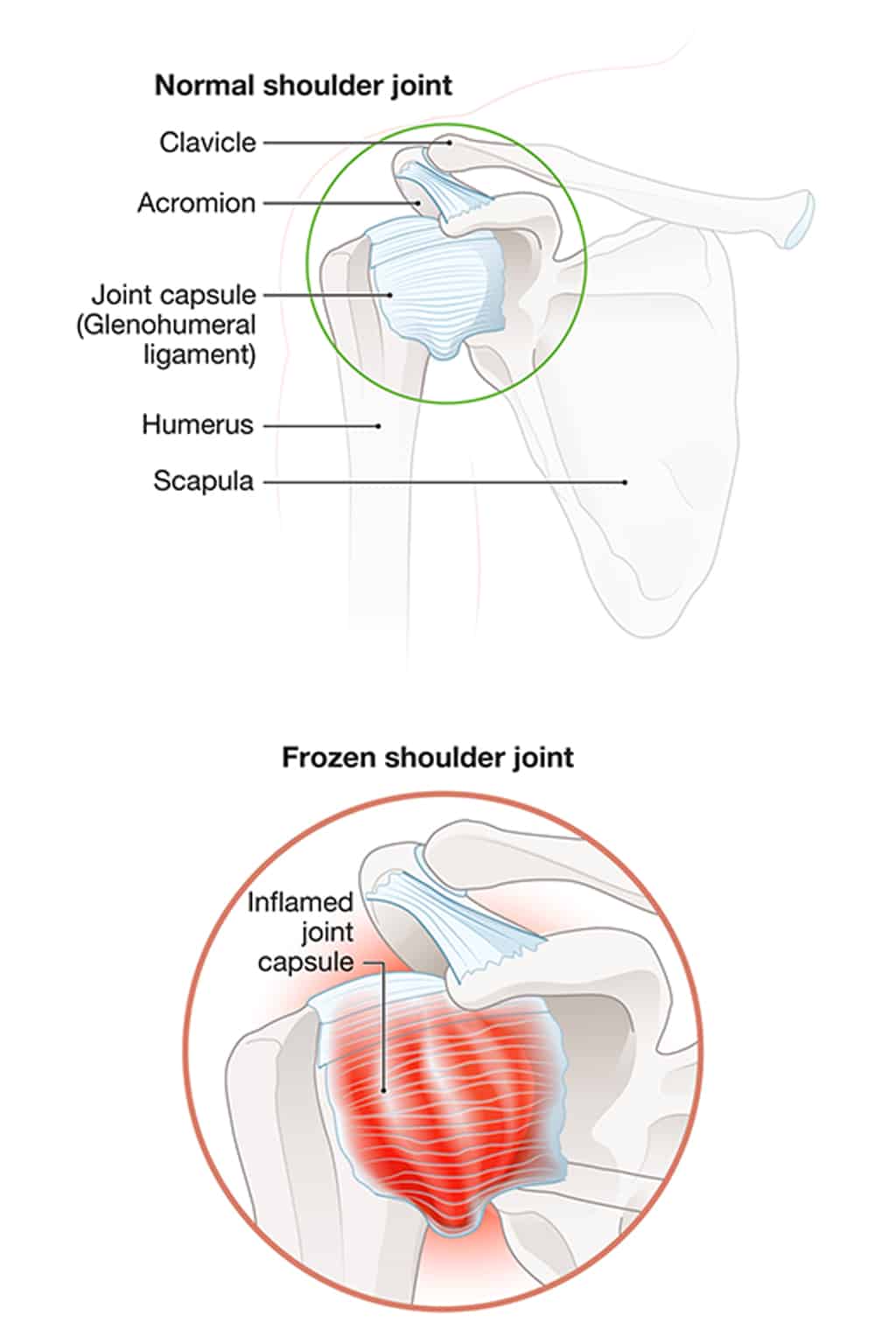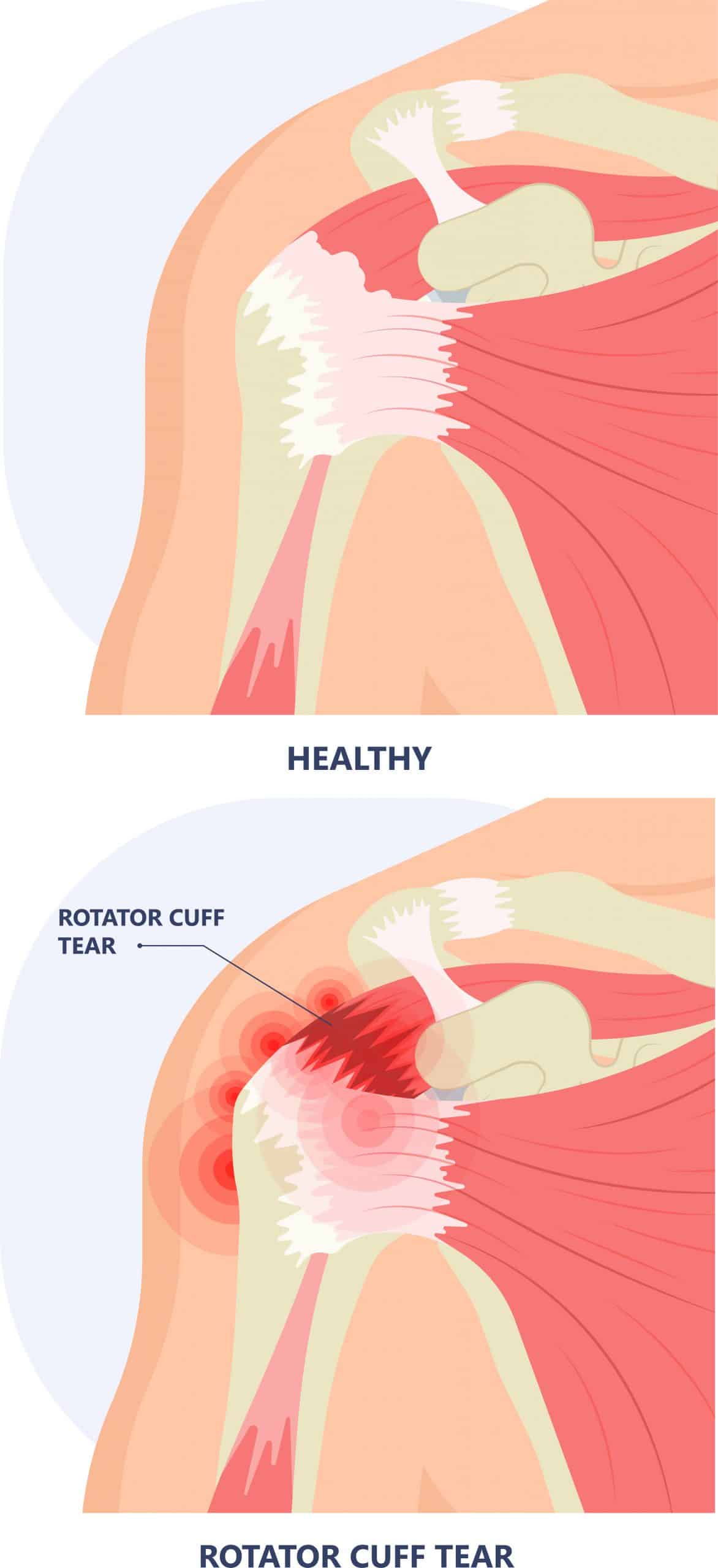Shoulder Pain
Shoulder problems are common, 31% of people have to deal with them at one time or another. In most cases a shoulder complaint does not have an acute onset but develops gradually. We then speak of a SAPS (Sub Acromial Pain Syndrome), which is a collective term for all chronic pain around the shoulder with the exception of the frozen shoulder (capsulitis adhesiva). If the symptoms are acute: then there may be a rotator cuff tear (muscle cuff around the shoulder) or a SLAP lesion (damage to the attachment of the biceps tendon in the shoulder).
SAPS (Sub Acromial Pain Syndrome).
Features
The pain is in the shoulder and sometimes migrates to the upper arm or neck. Pain can occur when lifting sideways, putting the hand on the back, moving the arm in front of the body or reaching far, sometimes this is a shooting pain.
Cause
The cause of SAPS usually lies in multiple areas. The shoulder cannot be seen as a stand-alone joint but as part of a chain of motion. This chain of motion runs from the upper back and neck, through the ribs, the scapula and the clavicle to the shoulder joint. Because of this, all the intervening muscles and joints have an influence on the functioning of the shoulder. Often the dysfunction of this chain manifests itself in a problem in one of the rotator cuff muscles. Through this process, the tendons may be subject to a type of wear and tear (tendinosis) and calcifications or bursitis may occur. Ultrasound can better determine the location and severity of the injury than with clinical examination alone.
Treatment
It is important to address both the cause of the movement dysfunction and the manifestation of the problem: the painful muscle or tendons. Treatment will include mobilizing or manipulating the entire chain, stretching muscles, increasing local load capacity by doing exercises and improving movement patterns. This treatment can possibly be supported with EPTE (Percutaneous Electrolysis). In the absence of treatment results, you may be referred for an orthopedic consultation.
Frozen shoulder (capsulitis adhesive)
Features
The pain is usually throughout the shoulder. The pain can be quite severe at first and is similar to that of bursitis. The pain in this case is caused by inflammation of the entire shoulder capsule, this inflammatory process causes the capsule to begin to adhere and the mobility of the shoulder to deteriorate. This first phase is called the freezing phase. The phase that follows this, the second or "frozen phase," is characterized by a decrease in pain and a stabilization of the adhesions process. The pain is now less prominent but more restriction is experienced due to the lack of mobility. In the third phase, the thawing phase, the mobility of the shoulder returns very slowly and will always recover to normal mobility.
Cause
The cause of frozen shoulder is not yet known.
Treatment
Treatment of a frozen shoulder is not started until the second stage. The reason for this is that the inflammatory process, and thus pain, may increase as a result of physical therapy treatment. The treatment initially consists of stretching the shoulder capsule and mobilizing the shoulder girdle (neck and upper back) in order to optimize the total mobility of the shoulder. At a later stage, muscle strengthening exercises and exercises aimed at optimizing a correct movement pattern will be started. The total process can take one to two years.
Coverage
Because of the chronicity of the complaint, you are entitled to one year Coverage from basic insurance. This is only on referral from the general practitioner or specialist.
Rotator cuff rupture
Features
The pain is similar to that of a SAPS (see above) but characteristic of this condition is that the strength of the shoulder is greatly reduced or even completely absent in certain directions.
Cause
A tear of one of the shoulder muscles can occur not only from trauma, but can also occur spontaneously. As we get older, the quality of the shoulder muscles can deteriorate more and more. This can deteriorate to the point where normal movement can already lead to a tear. This is not to say that pain or discomfort is experienced. Various studies show that in people over 60 years of age between 15-39% have a tear in one of the muscles without experiencing any symptoms.
Treatment
To make the tendon tensile again and to restore the strength of the muscles, the treatment consists mainly of muscle strengthening exercises. This can possibly be supplemented with EPTE (percutaneous electrolysis) if the treatment does not have the desired effect.
SLAP lesion
Features
A SLAP (Superior Labrum Anterior to Posterior) lesion always occurs acutely. The pain is often stabbing and is experienced at the front or deeper in the shoulder, especially with overhead or throwing movements. Sometimes a click can then be felt in the shoulder. The arm may also feel heavy or lame (dead arm syndrome).
Cause
A fall on the extended arm or when the arm is stopped during a throwing motion can cause a SLAP lesion. The attachment of the biceps tendon in the shoulder to the cartilage can be partially pulled loose in this process.
Treatment
If a SLAP lesion is suspected, a referral to the orthopedic surgeon is usually chosen for further diagnosis and possible treatment. If it turns out that the damage is not too extensive, a conservative policy is chosen in which the strength and mobility of the shoulder are optimized.
Research and treatment
The physical therapist will assess your symptoms through an interview and focused examination. Then the diagnosis will be discussed with you and a personalized treatment plan will be drawn up.
Cost
Physical therapy is covered by your supplementary insurance. Don't have supplementary insurance? Then we apply the following rates.
With frozen shoulder and after surgery, you are entitled to one year coverage from the basic insurance. This requires a referral from the general practitioner or specialist.
GP/specialist referral
Would you like to make an appointment regarding any of the above complaints? You can use the button below online or by phone.




